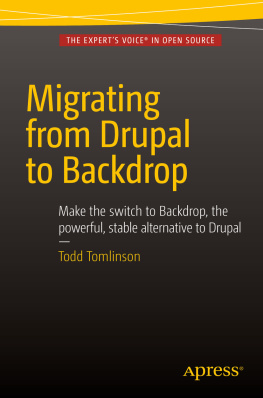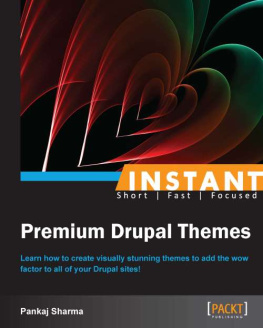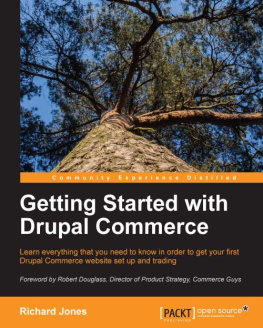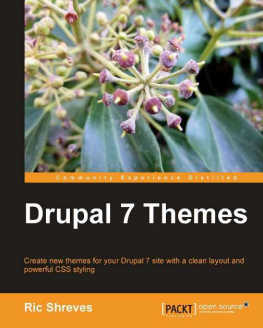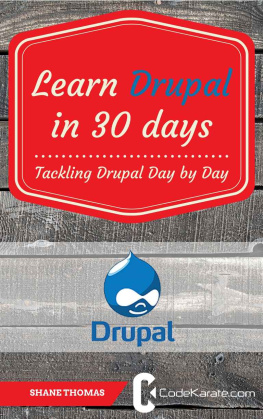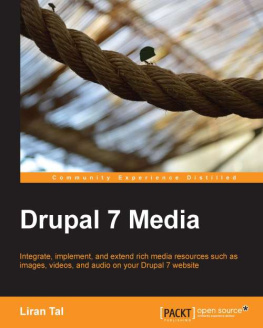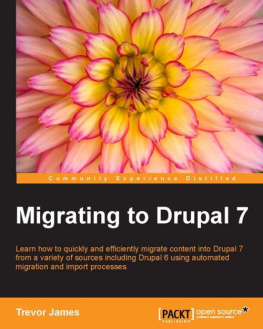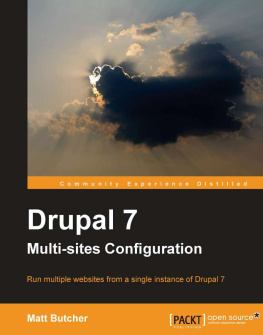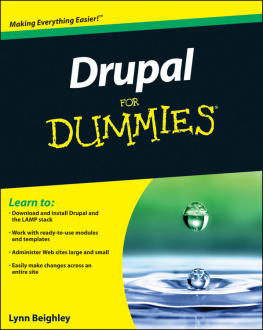Tomlinson - Migrating from Drupal to Backdrop
Here you can read online Tomlinson - Migrating from Drupal to Backdrop full text of the book (entire story) in english for free. Download pdf and epub, get meaning, cover and reviews about this ebook. City: Berkeley;CA, year: 2015, publisher: Apress, genre: Computer. Description of the work, (preface) as well as reviews are available. Best literature library LitArk.com created for fans of good reading and offers a wide selection of genres:
Romance novel
Science fiction
Adventure
Detective
Science
History
Home and family
Prose
Art
Politics
Computer
Non-fiction
Religion
Business
Children
Humor
Choose a favorite category and find really read worthwhile books. Enjoy immersion in the world of imagination, feel the emotions of the characters or learn something new for yourself, make an fascinating discovery.
Migrating from Drupal to Backdrop: summary, description and annotation
We offer to read an annotation, description, summary or preface (depends on what the author of the book "Migrating from Drupal to Backdrop" wrote himself). If you haven't found the necessary information about the book — write in the comments, we will try to find it.
Migrating from Drupal to Backdrop — read online for free the complete book (whole text) full work
Below is the text of the book, divided by pages. System saving the place of the last page read, allows you to conveniently read the book "Migrating from Drupal to Backdrop" online for free, without having to search again every time where you left off. Put a bookmark, and you can go to the page where you finished reading at any time.
Font size:
Interval:
Bookmark:
- Make backward compatibility important : Backdrop will attempt to keep API changes to a minimum so that contributed code can be maintained easily and existing sites can be updated affordably. Every big change that cant be made backward compatible will need to be carefully considered and measured against Backdrops other principles. For those who have lived through migrating sites from Drupal 4 to 5, 5 to 6, 6 to 7, and now 7 to 8, the pain of change is often the greatest deterrent to migrating from one major version to another. The Backdrop team understands this dilemma and is addressing it with a focus on backward compatibility.
- Write code for the majority . Backdrops aim is to be easy to learn and build upon, even for those with a minimal amount of technical knowledge. The underlying philosophy is to focus on the site builders instead of the developers, making site building as easy as possible and making how things work immediately clear and easily documentable.
- Include features for the majority : The teams directive is that core should include only the features and tools that benefit the majority of sites that are running on it, keeping the complexity and footprint of core to a minimum. This approach is central to the focus on making Backdrop friendly to the shared hosting providers, keeping the costs of hosting a Backdrop site low.
- Ensure that Backdrop can be extended : With a focus on keeping core to a minimal footprint, ensuring that Backdrop may be extended through contributed modules is critical. Complex solutions will be relegated to contributed modules as will use cases that are too specific to be considered as candidates for core.
- Meet low system requirements : Backdrop must be able to run on affordable hosting with basic requirements, foregoing popular trends in technology over common, proven, and learnable systems.
- Plan and schedule releases : Each release will contain a set of features and will be released on time. If a feature is not ready in time for a specific release, the feature will be postponed so the release will still be delivered on time.
- Remain free and open source : Open source has the ability to change the world for the better. All code included with Backdrop is under an open source license that allows anyone to use it free of charge, regardless of their beliefs or intentions.
- You cant take a Drupal 7 module and just install it on Backdrop without some modification. In , Ill cover common changes that must be made to a Drupal 7 module to make it compatible with Backdrop. Some of the changes are simple, such as editing the modules .info file and changing core = 7.x to backdrop = 1.x .
- Backdrop uses configuration management instead of variables that are stored in the database. Backdrop adopted the Drupal 8 approach of moving configuration information out of the database and into the file system, making it easier to manage the process of deploying code and configuration between environments. In , Ill cover how to change a Drupal 7 module to accommodate how Backdrop handles configuration.
- The file structure has changed. Common Drupal files such as settings.php and common directories such as the Files directory are now located in the root directory of your site. Youll also notice fewer files in the root directory. In an off-the-shelf installation of Drupal 7, there are 25 files/directories in the root directory, whereas in Backdrop there are only 12. In , Ill cover the differences in the file system and where to find the directories and files that a typical Drupal developer or site builder might use and where they can be found in Backdrop.
- The installation process has changed. The Backdrop team simplified the installation process. In , Ill cover the process of installing Backdrop, highlighting the primary changes between installing Drupal and Backdrop.
- The user interface has changed. While Backdrop looks a lot like Drupal, including Bartik as the default theme, there are key differences in editorial/content management, site building, and site management elements in Backdrop. In , Ill cover what has changed in the administrative and editorial interface in Backdrop.
- The process for locating contributed modules and themes is different from Drupal in that modules and themes are located on GitHub. In , Ill cover the process for finding, downloading, and installing contributed modules and themes in Backdrop.
- Building pages has changed in Backdrop. Panels were ported to Backdrop; however, the administrative interface for creating pages has changed significantly. In , Ill cover the Layout module and how pages are constructed in Backdrop.
Font size:
Interval:
Bookmark:
Similar books «Migrating from Drupal to Backdrop»
Look at similar books to Migrating from Drupal to Backdrop. We have selected literature similar in name and meaning in the hope of providing readers with more options to find new, interesting, not yet read works.
Discussion, reviews of the book Migrating from Drupal to Backdrop and just readers' own opinions. Leave your comments, write what you think about the work, its meaning or the main characters. Specify what exactly you liked and what you didn't like, and why you think so.

